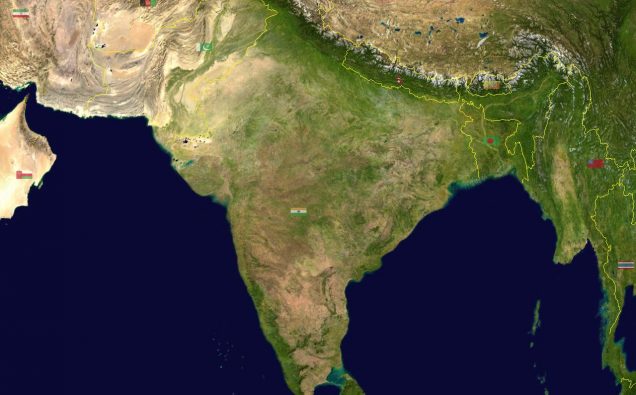
Does human activity – especially the burning of coal, oil, and natural gas – cause global warning? The debate continues.
In the meantime, threats posed by the Earth’s changing climate have been spelled out in newly released research – and the forecast is alarming.
The findings, based on an analysis of data from the Massachusetts Institute of Technology, report a “serious and unique risk” for the people, livestock, and crops in South Asia’s most active agricultural regions.
The study finds that by the end of this century the Ganges and Indus River Basins may be subject to heat waves of such intensity that human survivability in those areas will be threatened.
Without climate change policies that have a measurable impact in reducing the negative effects of climate change, the authors say, severe hazards “will fall on some of the most vulnerable populations” in South Asia. These hazards include “increasing the risk of illness and death related to extreme heat conditions.”
In their peer-reviewed study the authors cite climate data going back to the mid-1970s to show slow but steady increases in seasonal temperatures – and the negative impact on humans and animals in South Asia’s agricultural regions, where outdoor work is common and air conditioning is not available. Data show that in the last 20 years heat waves in India and Pakistan have increased in intensity, “resulting in thousands of deaths to humans and livestock.”
South Asia’s agricultural regions are already vulnerable to heat waves because of their geographic locations, weather patterns, and the impact of widely used irrigation methods. Monsoons – often destructive to human settlements but essential to the growth of crops – bring heat and humidity to the Ganges and Indus River Basins, and are likely to have a more significant impact as global temperatures rise.
The study, released this month, was conducted by scientists from MIT, Hong Kong University, and Loyola Marymount University in California, and its calculations are based on the ability of the human body to withstand heat stress in direct sunlight. The study measures heat stress in terms of the combined effect of temperature, humidity, wind speed, the angle of the sun, and cloud cover, and calculates that the “upper limit on human survivability” is 35 degrees Centigrade. Above that temperature over an extended period, the human body’s ability to cool itself is reduced, affecting physical and mental functions. Under these conditions, agricultural workers in the most vulnerable regions of South Asia – or anywhere else – face the increasing likelihood of heat-related illness and strokes.
These findings come on the heels of withdrawal by the United States from the international Paris Agreement on climate change, an accord intended to reduce the impact of global carbon emissions on the environment. In announcing his decision to pull out of the accord, President Trump criticized the Paris agreement for not being “tough enough on India and China,” countries that make heavy use of fossil fuels. China is first on the global list of emitters of greenhouse gases, followed by the United States; India is third.
China has made significant investments in renewable energy sources and is currently the world leader in production of solar energy; Beijing projects a reduction in its consumption of coal, and significant reduction in its emission of pollutants from fossil fuels. The U.S. had pledged a reduction of carbon emissions by 26 to 28 percent by 2025, but President Trump has rolled back efforts to reach that goal, and has promised instead to revive the coal industry.
India has long sought to increase its pace of economic development and industrial growth, with plans to build a substantial number of coal-fired power plants; more than 200-million people in India currently do not have access to electricity. Indian Prime Minister Narendra Modi has also pledged to adhere to the Paris agreement, and to boost his country’s development of alternative energy sources.
The contrast between economic expansion and the consequences of its polluting effects on the atmosphere is seen in stark relief in this new study. Its authors say their ominous forecasts “may present a significant dilemma for India, because the continuation of this current trajectory of rising emissions will likely impose significant added human health risks to some of its most vulnerable populations.” Without significant changes, scientists warn that agricultural workers, their livestock, and the crops which currently feed millions of people in South Asia may be at risk – and by the end of the century, might not be able to survive.

















